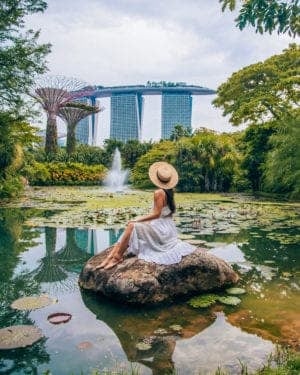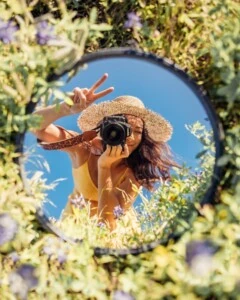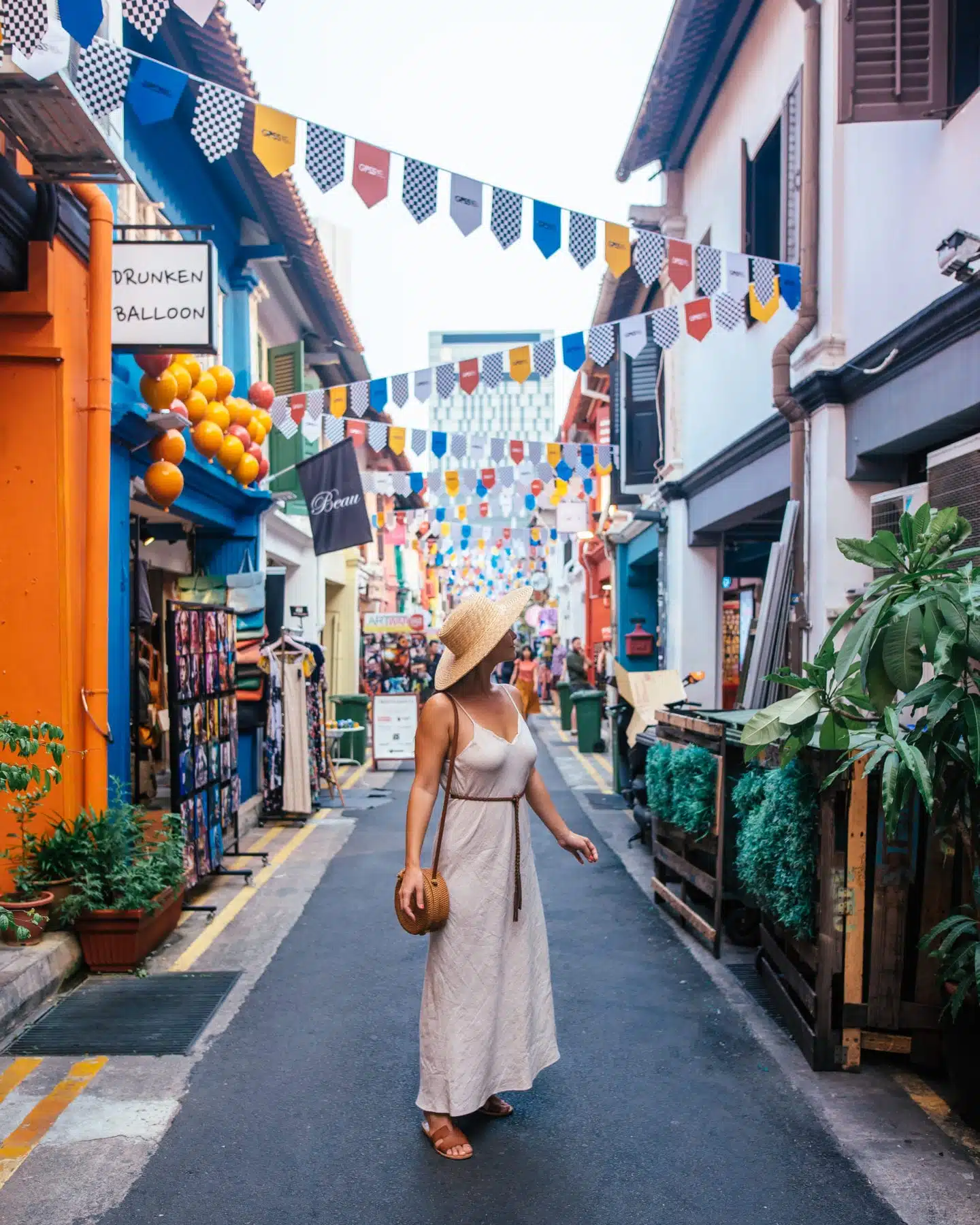
If you’ve never been to Singapore before but have plans to visit, you’re in the right place!
First, let me say that I’m so excited for you to explore this beautiful country! It holds a special place in my heart and is filled with so many incredible people and fun things to do.
I’m half Singaporean and my mom’s family lives in Singapore, so I’ve spent quite a bit of time in Singapore. And now that my parents live there part-time, I hope to get to visit even more. This country feels like a second home to me, and I’ve gotten to experience it like both a tourist and a local.
Here’s how I’d sum up what Singapore is like: beautiful high-rise buildings, excellent cuisine, and super easy to get around. Food and shopping are everywhere and it’s one of the most walkable countries I’ve ever been to!
I’ve learned that there are a lot of quirks that make Singapore Singapore. It’s so different from everywhere else in the world, so I’m here to tell you what you can expect on a visit to Singapore.
So, let’s get to it! Here are fifteen crucial things to know before visiting Singapore!
1. Singapore is roughly a quarter of the size of Rhode Island
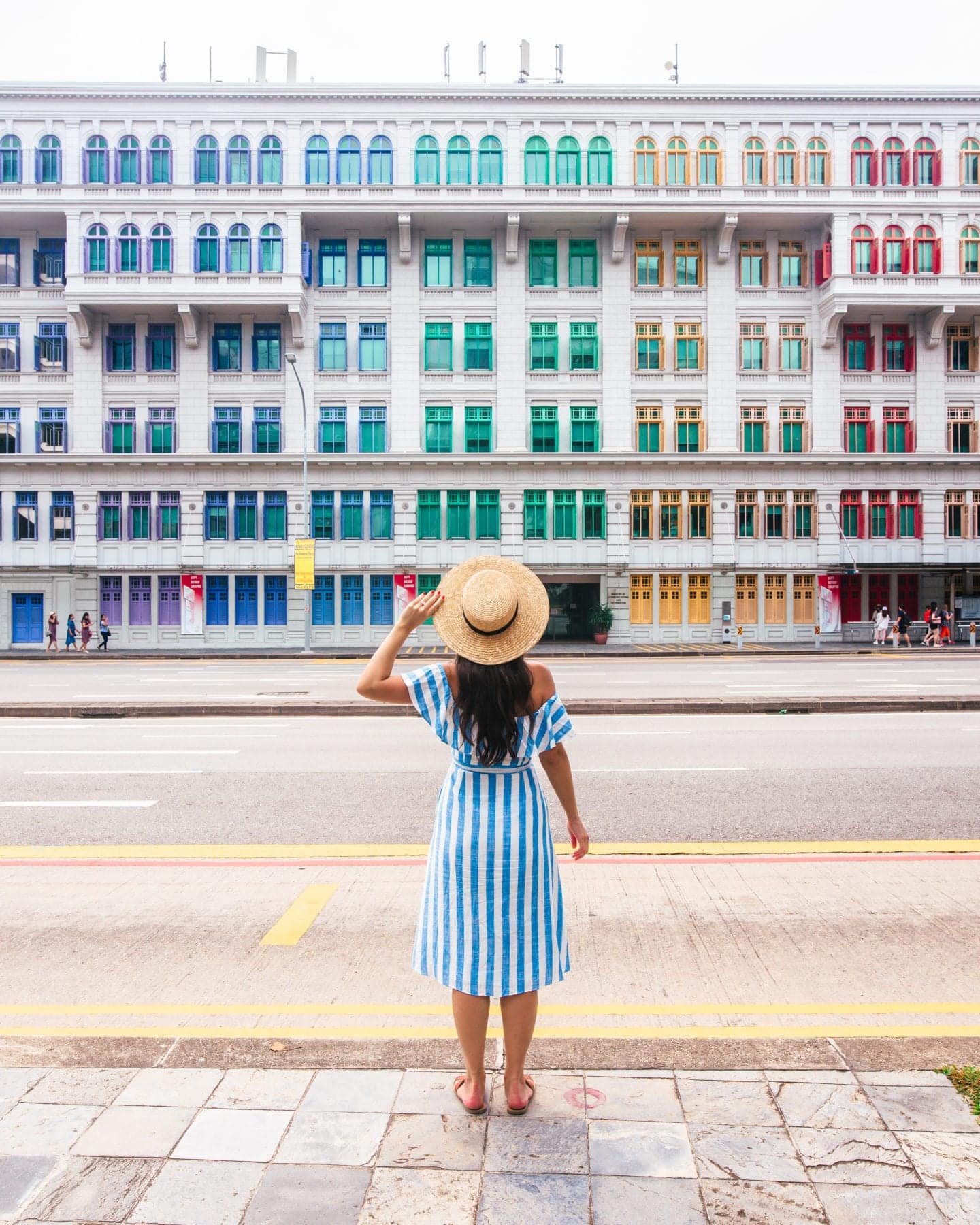
Singapore is known for its multicultural society, cuisine, culture, and people (with a population of ~5.4 million), and it’s also known for its small size. Can you believe such an incredible country is about a quarter of the size of the USA’s smallest state?
Singapore covers a total land area of 734.3 km² (or 283.5 square miles). The country measures 27 km (17 mi) from top to bottom and is 50 km (31 mi) wide.
Comparatively speaking:
- Ireland is ~98 times the size of Singapore
- London is just over twice as big as Singapore
- New York City is slightly bigger than Singapore
- Rhode Island is ~4 times as big as Singapore
Hopefully, these comparisons help you see just how small it really is!
In fact, you can bike around the whole circumference of Singapore, approximately 193 km (120 mi) in about 8 hours!
With its compact size, you can see so much of Singapore without wasting time getting from place to place. And trust me when I say that there are so many incredible things to do in Singapore.
Fortunately, its public transit system is very well built out, too, connecting place to place. We’ll dive more into that in a bit, though!
Fun fact: Singapore is a city-state, which means that the whole country is actually its only city, too. Yup, there’s only one city in Singapore: Singapore! Singapore is one of three city-states in the world, along with Monaco and the Vatican.
2. You can chew bubble gum in Singapore!
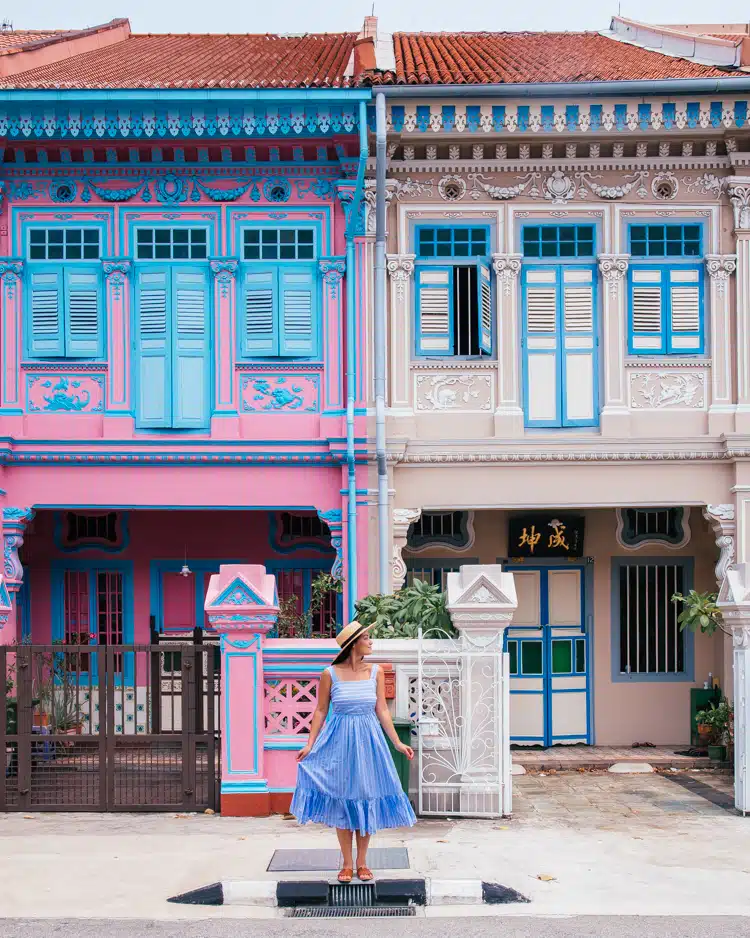
Oddly enough, one of the first things people know about Singapore is that ‘you can’t chew gum.’ What a funny anecdote for this country! And it’s actually not true!
Yes, you can get in trouble with the law if you spit your gum onto the street. You will get a fine for spitting it out in an inappropriate place, but it’s actually not illegal to chew gum in Singapore!
So why the rule? Well, Singapore cares about its cleanliness, environment, infrastructure, and safety.
And this is something you’ll experience when you get there! You’ll find that Singapore is an incredibly clean country.
The metro system is clean, the streets are clean, the buildings are clean. It’s orderly and nice, and if strict gum rules keep it that way, then so be it!
3. Singapore is incredibly modern but also incredibly green.

This island is known for being an ultra-modern city that is a global hub for trade, finance, innovation, and education. There are high-rise buildings all over Singapore… when you don’t have much land, you simply build up!
And Singapore has created some structures that are world famous like Marina Bay Sands, Singapore Changi Airport, and Gardens by the Bay. (Learn more about these places in my post about the best things to do in Singapore!)
But for such a modern city, you might be surprised by how much green space there is.
You’ll notice gardens on the tops and sides of buildings, an abundance of parks throughout the island, and dedicated green spaces/wildlife refuges.
It’s actually the second greenest country in Asia (behind Japan) according to the Environmental Performance Index.
4. They speak English (well… Singlish!) in Singapore!
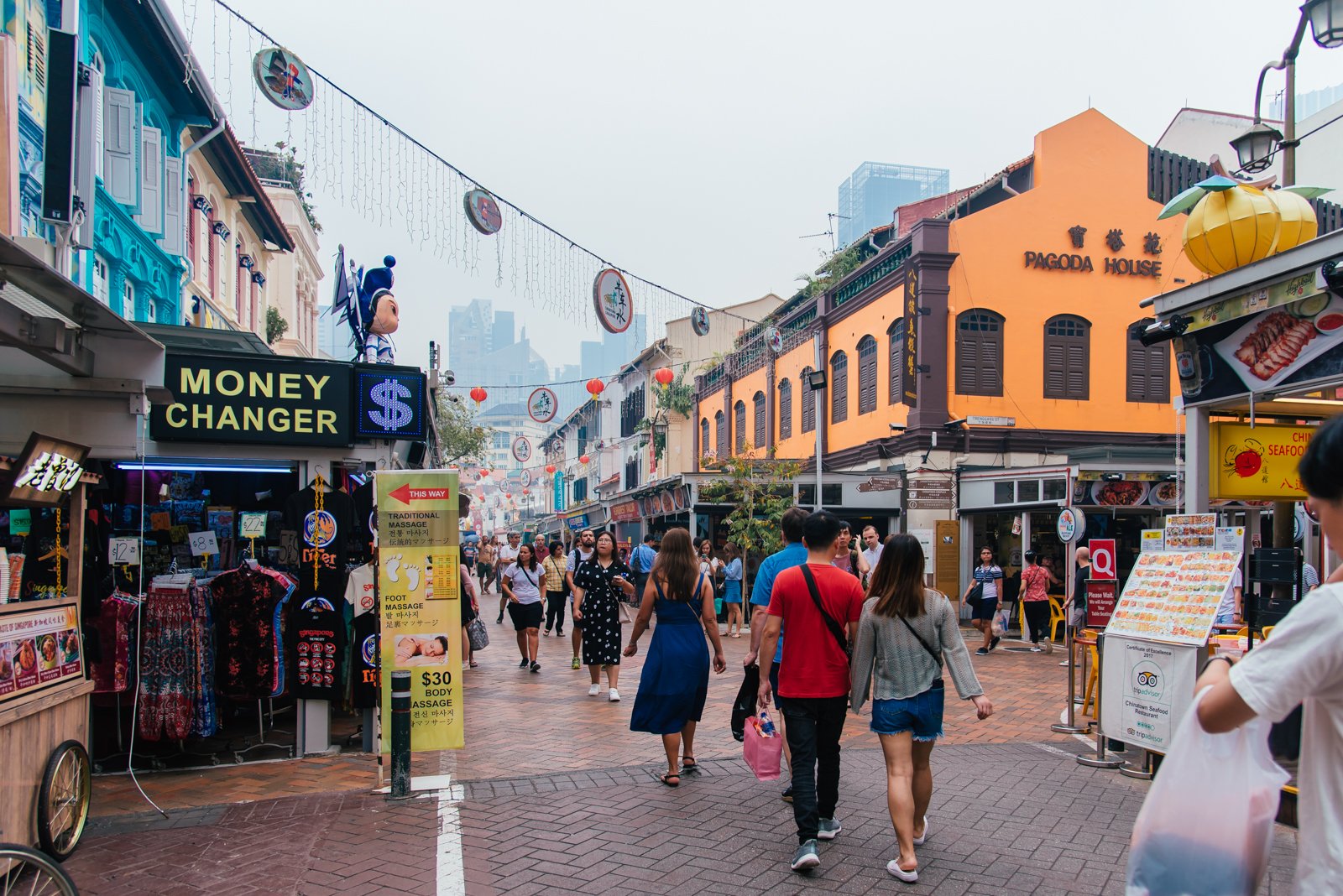
Do they speak English in Singapore? is a common question I get from people who have never been. And the answer is a hearty yes! English is the official business language of Singapore.
Pretty much everyone in Singapore speaks English, since English is taught in schools as a primary language. However, you’ll find exceptions in local neighborhoods and hawker centers, since many older Singaporeans don’t speak it. Instead, they speak Malay, Tamil, Chinese, or local Chinese dialects like Teochew (that’s what my grandparents speak!) or Hokkien.
But the majority of Singapore speaks English (increasingly so as time goes on). However, don’t be surprised when you hear Singlish (Singaporean English)!
Singlish comes with a slightly different cadence of speaking, adding “lah” to the end of some sentences (“let’s go lah”), and some Singaporean terms:
- Aiyoh!: an expression of surprise/annoyance (my family uses this one a lot haha)
- Aircon: air conditioner
- Can (as a one-word response): yes, of course
- Kopitiam/kopi: coffee shop/coffee
- Makan: food or eat (“let’s go makan”)
- Shiok: very good (“that food is damn shiok!” *I don’t curse but you might hear this expression a lot so I had to put it in there!*)
5. Public transportation is the easiest way to get around Singapore.
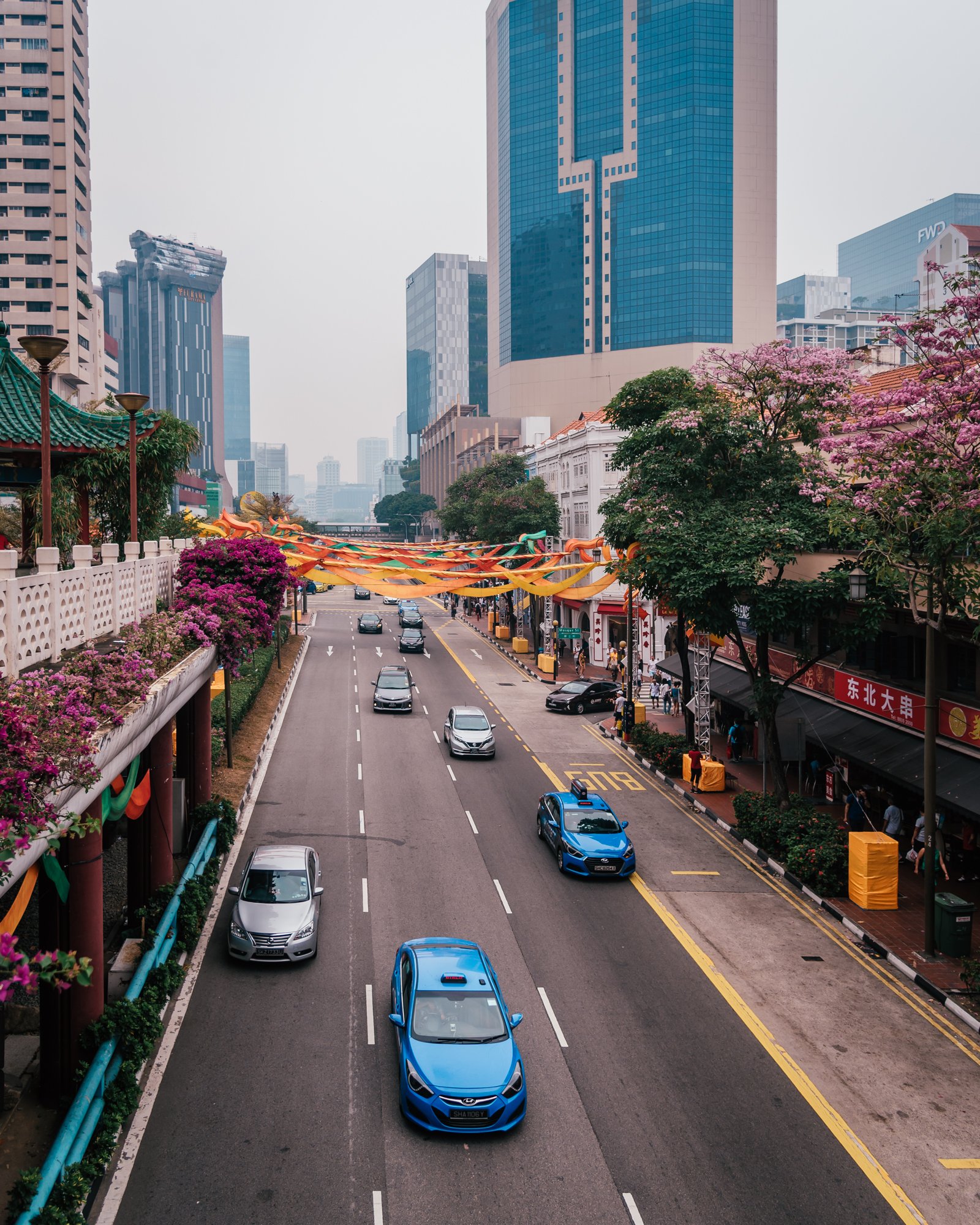
While taxis and rideshare options exist in Singapore (no Lyft or Uber, instead you’ll find Grab is the most popular rideshare app), most people opt for its public transit system.
Singapore has one of the best public transportation systems I’ve ever experienced. The MRT is the Singaporean metro and takes you anywhere you could want to go.
It’s clean, orderly, predictable, and efficient. You’ll find MRT stations everywhere!
That also means that it’s an incredibly walkable country, too.
Joggable, too! I once jogged from my uncle’s flat near Boon Keng MRT to the Singapore Botanic Garden. It was a long jog/walk (~6.7km or ~4 mi one way), but that goes to show you just how well-connected everything is with sidewalks! (I also bumped into my church’s – Redemption Hill Church’s – lead pastor along that walk… but I guess that’s not surprising given the island’s size!)
You can also rent a bicycle if you’d rather get around Singapore that way. There are many bike rental services available in the city, from dockless bike-sharing apps to traditional bike shops. You can use apps like SG Bike, Anywheel, or Moov to find and unlock bikes near you. Or you can visit a bike shop like Coastline Leisure, Bike Around Tour, or Hello Bicycle and rent a bike for a fixed period of time.
A note on taxis: If you do opt for a taxi, you can be assured you’re getting a fair rate; taxis in Singapore are metered and regulated. No overcharging here!
6. There are Wi-Fi hotspots all over the island.
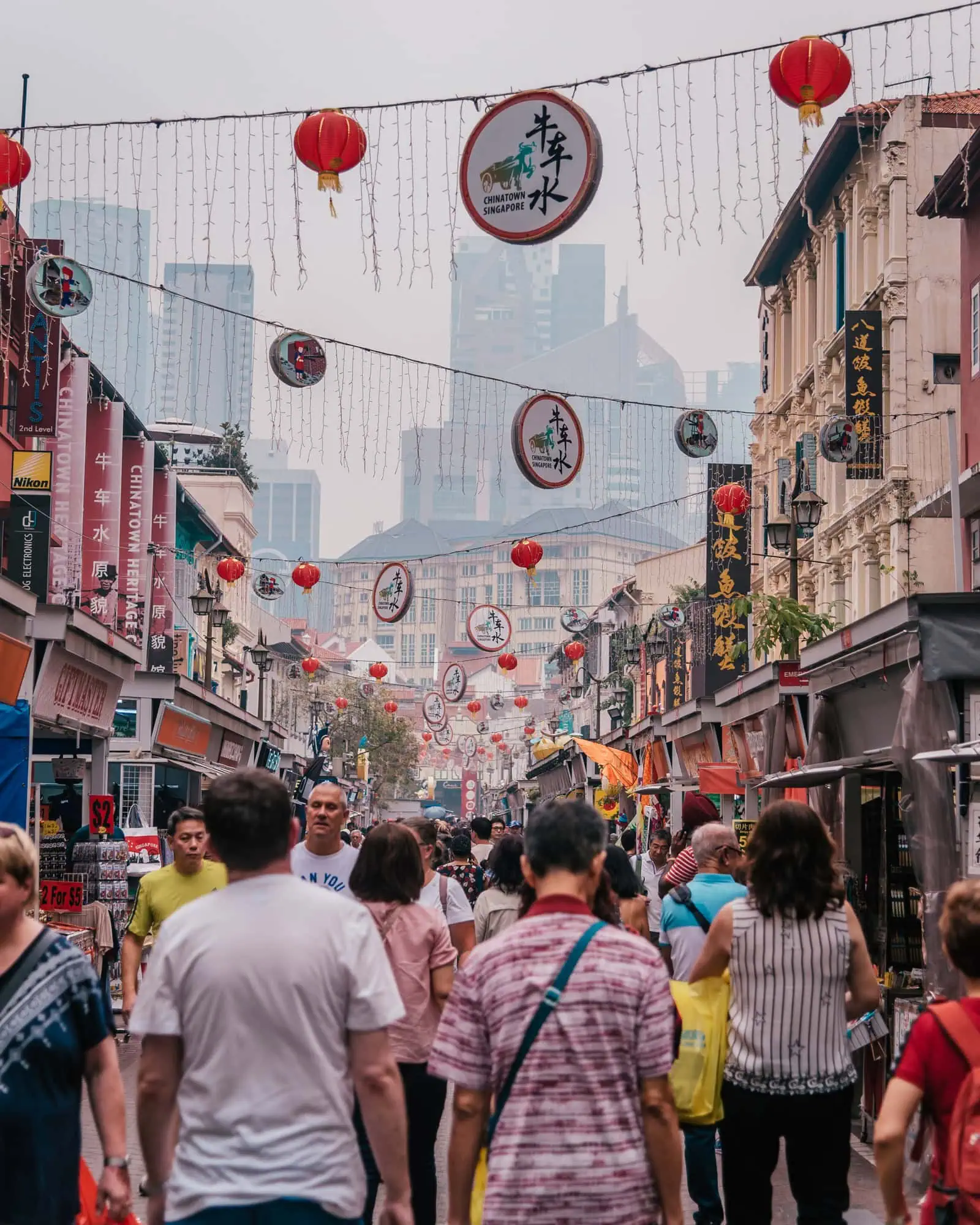
You’ll be happy to know that plenty of Wi-Fi hotspots are available throughout the city, many of them being Wireless@SG.
You can easily connect to the internet at public places like malls, libraries, parks, and even buses and trains. You can also use the Wireless@SG app to find and access Wi-Fi hotspots near you.
With so many options, you might wonder if you need a cell phone plan while you’re there. The answer depends on your needs and preferences.
If you only need to make occasional calls or send messages, you can use apps like WhatsApp, Skype, or Telegram over Wi-Fi.
However, if you want to have more flexibility and convenience, you might want to get a prepaid SIM card that offers unlimited data and local calls. You can buy these from various providers at the airport or convenience stores.
I bought a SIM when I lived there for a few months, but I don’t buy one when I visit for less than a month.
7. You need to exchange cash in Singapore to eat like a local.
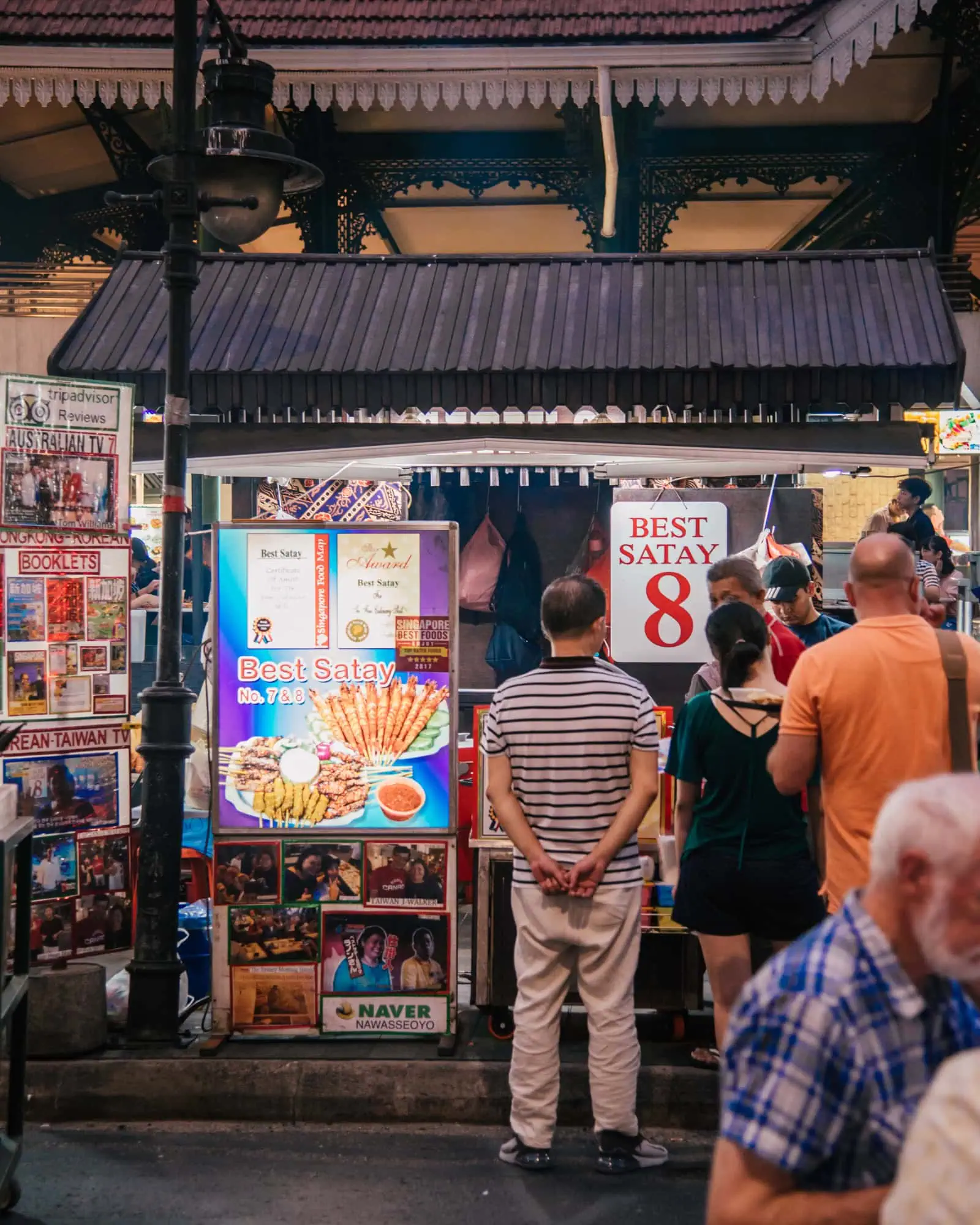
Here’s a crucial question when visiting anywhere new: do I need to exchange money?
If you want to dine like a local, then yes, you’ll need to get some cash. Even though it can be annoying to transfer cash, the big upside to dining like a local is that it is very cheap.
There’s a lot of talk about Singapore being an expensive country. But that’s if you’re only hitting up the touristy places!
If you’re up for dining in hawker centers (more about those in a bit), you’ll save quite a bit of money but will need to take out some cash.
How much cash, exactly? If you were to eat at a hawker center for all three meals, it would cost about S$17-20 per person. (A typical Hawker meal costs around S$5-7.)
You’ll also need cash for local shopping or small produce stands.
8. There are hazy days in Singapore.
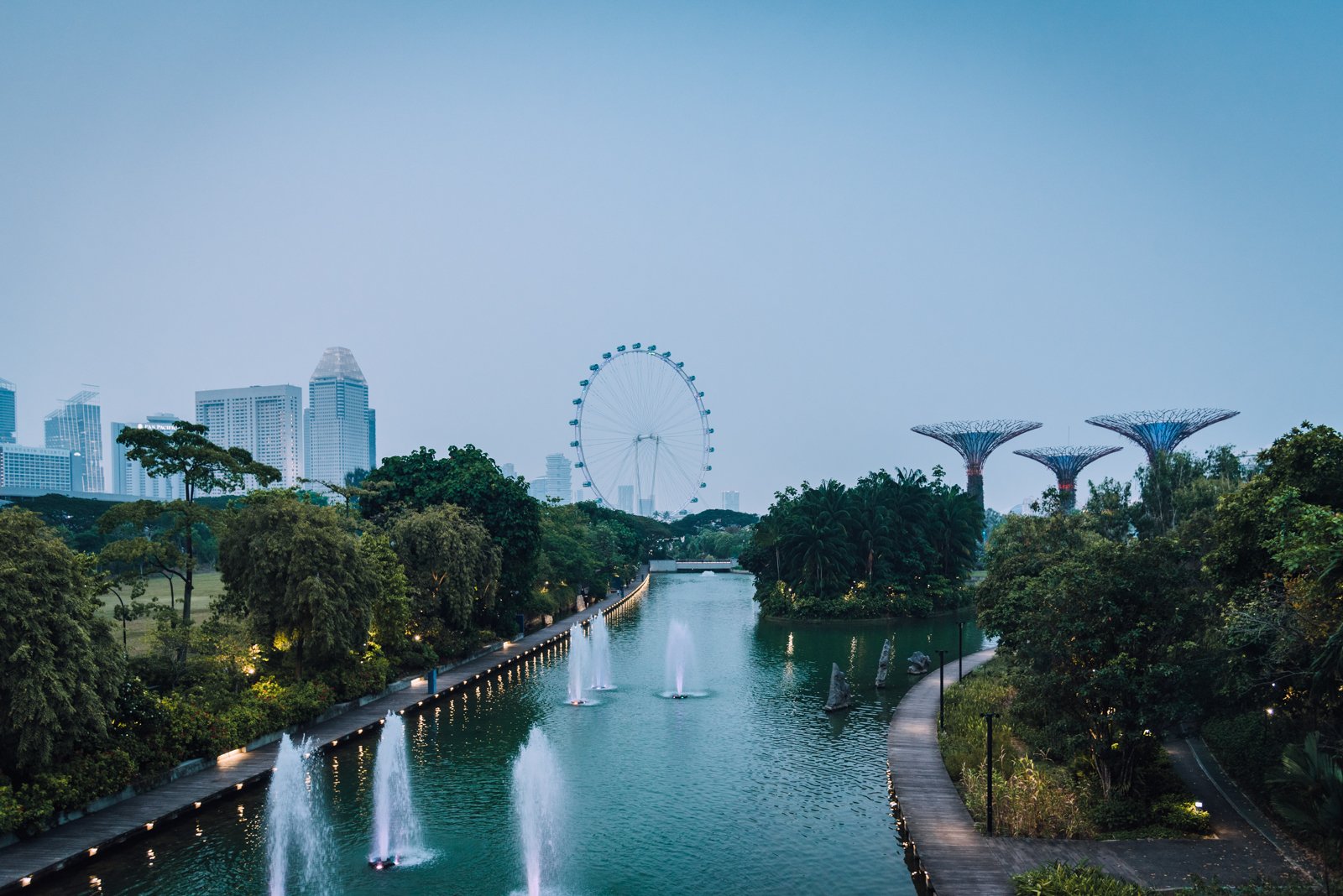
When I moved to Singapore for the summer, I had no idea that haze was a thing. I was working in a lab at Duke-NUS, and one day in late July, one of my lab mates commented that there was haze in the forecast.
Haze? That was a new weather phenomenon for me! Fortunately, it wasn’t too bad in July and August when I was there that year.
But you never quite know how haze will affect your plans! Here’s what you need to know:
Haze is a phenomenon in Singapore that shows up each year, with a tendency to hit the hardest between July and September or October. Singapore is especially prone to haze in its dry season with changing winds and low levels of rain to clear the air.
Haze is caused by smoke particles from forest fires in neighboring countries, mainly from Indonesia. Haze can affect air quality, visibility, and health.
When there is haze in Singapore, you can expect to see a greyish or brownish sky, smell a burning or smoky odor, and feel irritation in your eyes, nose, and throat. You may also experience coughing, sneezing, wheezing, or shortness of breath.
You’ll find many people walking around with masks on hazy days (even in pre-pandemic times!).
But don’t let the haze get you down! Many of Singapore’s attractions are indoors, making it easy to avoid time in the haze.
What to Do When There is Haze
Here’s what to do if you find yourself in Singapore on a hazy day:
- Check the air quality index (AQI) on the National Environment Agency (NEA) website or app. The AQI indicates the level of pollutants in the air and the health effects they may have. The higher the AQI, the more hazardous the air quality.
- Wear a high-filtration mask outdoors, especially when the AQI is above 100.
- Stay indoors as much as possible.
- Drink plenty of water and eat healthy foods to stay hydrated and boost your immune system. Avoid caffeinated, alcoholic or sugary drinks, as they can dehydrate you and worsen the effects of the haze.
9. February to April is the best time to visit Singapore.
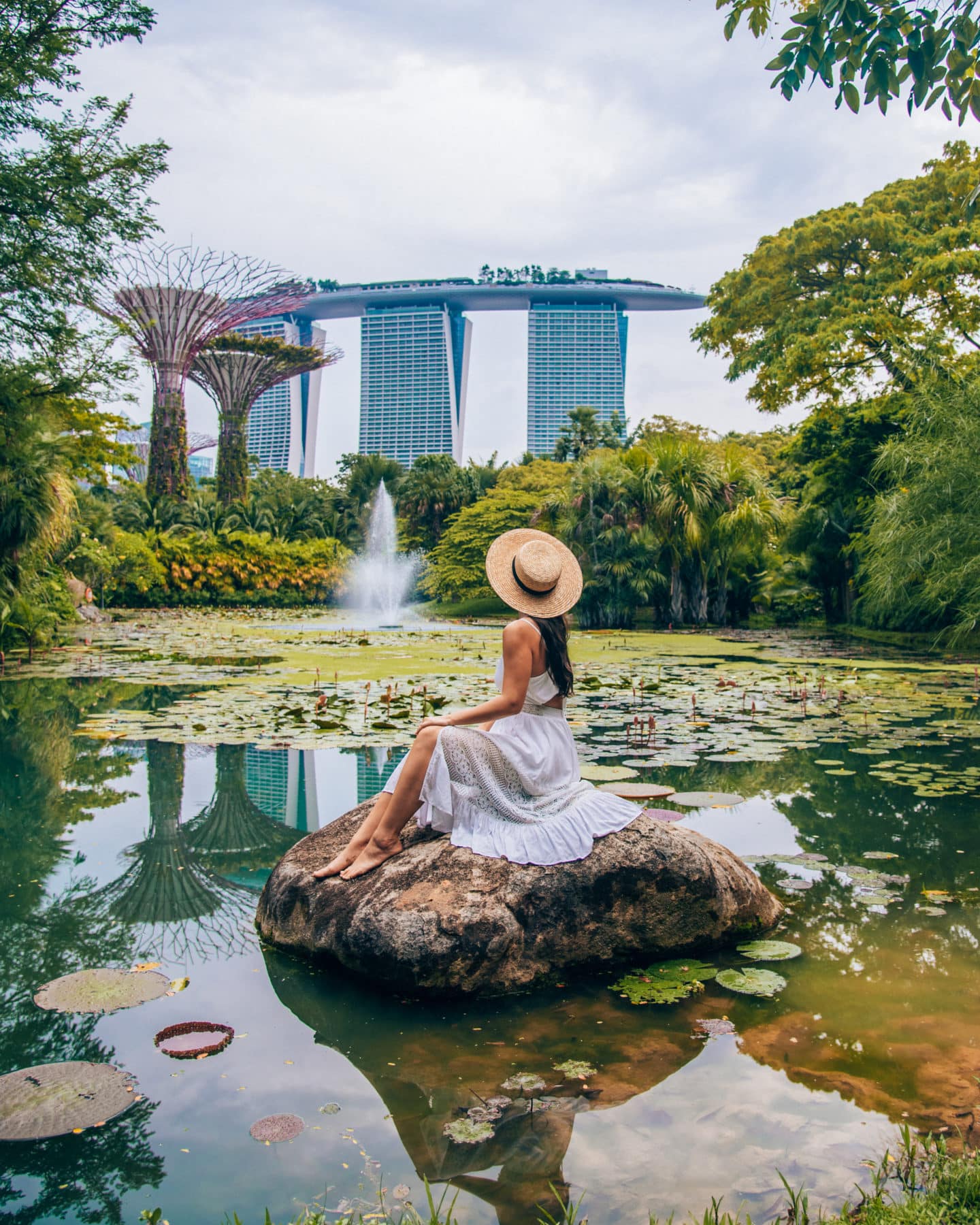
While Singapore is warm all year round, some months are better than others, depending on what you want to do and see. Here is a brief guide on the best time to visit Singapore based on the weather and the events.
February to April: This is the dry season in Singapore, with lower rainfall and humidity than other months. The average temperature is around 28°C (82°F), which is comfortable for exploring the city’s attractions. You can also enjoy the annual World Gourmet Summit in April, where you can taste delicious dishes from around the world.
June to August: This is the hottest season in Singapore, with average temperatures reaching 31°C (88°F). If you love the beach, this is a good time to visit, as you can soak up the sun and swim in the clear water. You can also join the Singapore Food Festival in July, where you can sample local delicacies and street food.
November to January: This is the rainy season in Singapore due to the northeast monsoon. You can expect heavy rain and thunderstorms almost every day, especially in December. The average temperature is around 26°C (79°F), which is still warm but not ideal for outdoor activities. However, you can still enjoy the festive atmosphere of Diwali in November, Christmas in December, and Chinese New Year in January or February.
September to October: This is the least recommended time to visit Singapore, as the air quality is very poor due to the aforementioned haze from Indonesia. The average temperature is around 29°C (84°F). As far as events go, the Grand Prix Singapore happens in September, which attracts many racing fans.
10. Singapore is an incredibly safe country.

It’s consistently ranked in the top ten safest countries in the world according to the Global Peace Index. (Probably due to its strict laws like the aforementioned gum restrictions, but I’ll leave that explanation to someone more knowledgeable.)
That makes Singapore a very easy country to visit.
In fact, if you’ve never visited Asia before, Singapore is a great gateway to Asia. It’s safe, they speak English, and it’s clean! It’s an ideal travel destination if you’re not used to stepping outside your comfort zone.
And Singapore is ideal for solo travel, too!
The summer I lived in Singapore, I spent so much time by myself exploring the country. As a young female (it was the summer I turned 21), I felt completely safe everywhere I went.
11. There aren’t any beautiful tropical beaches in Singapore.
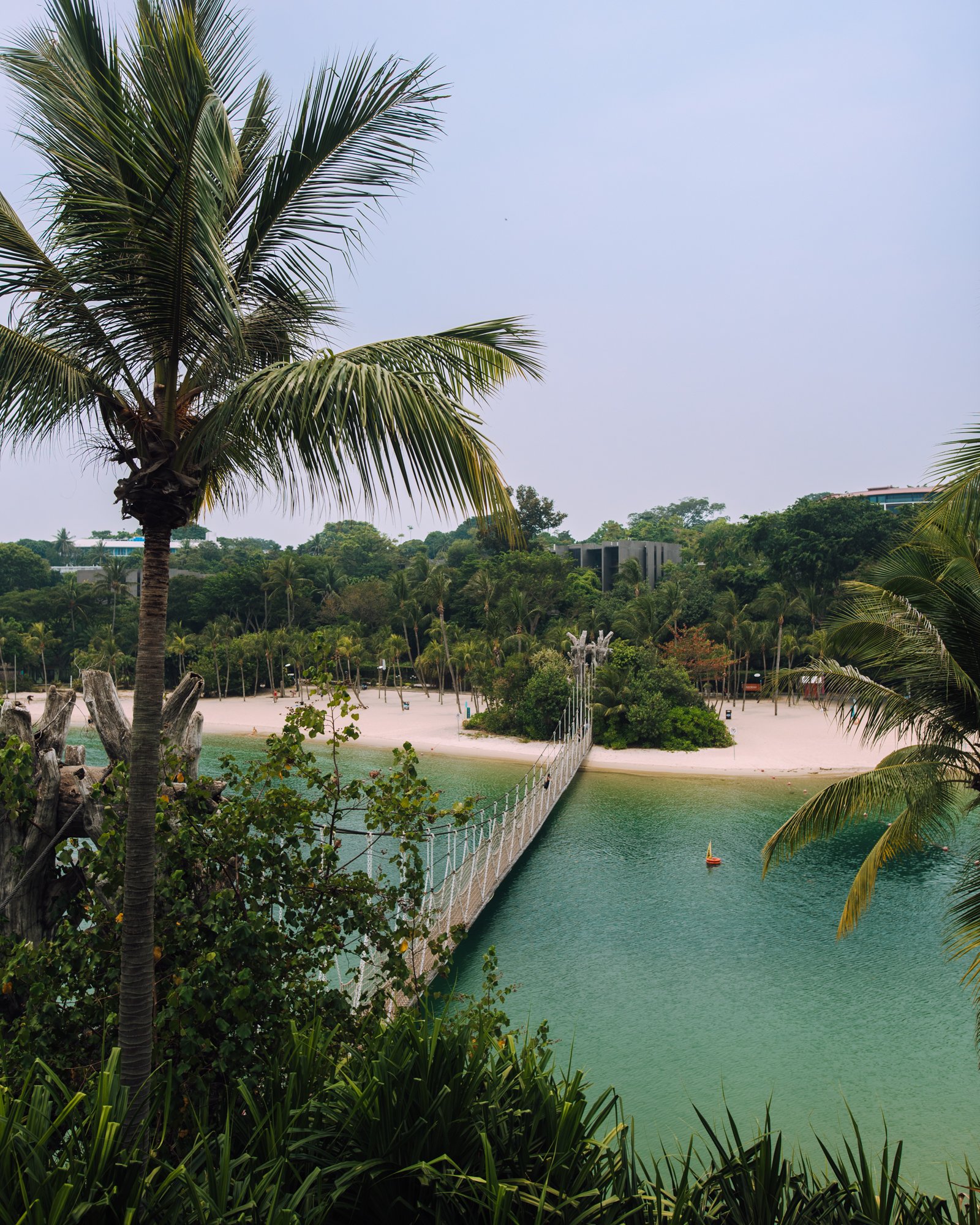
If your idea of Southeast Asia is the tropical white sand beaches and clear blue waters you’d find in Thailand or Bali, I hate to break it to you- but you’ll need to temper your expectations for Singapore.
Singapore has pretty average beaches- perhaps because many of them are manmade or because there’s not a whole lot of space for beaches on the tiny island. But even so, I love going to the beach, so the summer I lived in Singapore, I went to the beach about once a week.
Here’s my list of “best” beaches in Singapore (but again, lower your expectations).
- Tanjong Beach: This is the prettiest and typically least crowded beach on Sentosa Island. As such, it’s the beach I would visit most frequently when I lived in Singapore. If you’re hungry or thirsty, you can head to the Tanjong Beach Club for food, drinks, and music.
- Siloso Beach: This is the opposite of Tanjong Beach- it’s the most happening and energetic beach on Sentosa. Here, you can try various water sports, play beach volleyball, and enjoy the cafés and bars along the coast.
- Palawan Beach: This is the best beach for families on Sentosa Island, with a pirate-themed water park, a suspension bridge (pictured above), and an animal show.
- Changi Beach: This is one of Singapore’s oldest and most natural beaches, located on the mainland near the airport. It has a long stretch of sand and a park with barbecue pits, cycling trails, and playgrounds. It’s also a popular plane spotting, fishing, and camping spot.
- Punggol Beach: This is another natural beach on the mainland, located in northeastern Singapore. It’s part of the Punggol Waterway Park, which has a scenic promenade, a fitness corner, and a heritage trail. The beach itself is rocky and rugged, but it has a serene atmosphere and a beautiful sunset view.
And while it doesn’t have swimmable beaches, Pulau Ubin is one of the best tranquil nature spots in Singapore, and I highly recommend it!
12. Singapore has the world’s coolest airport.
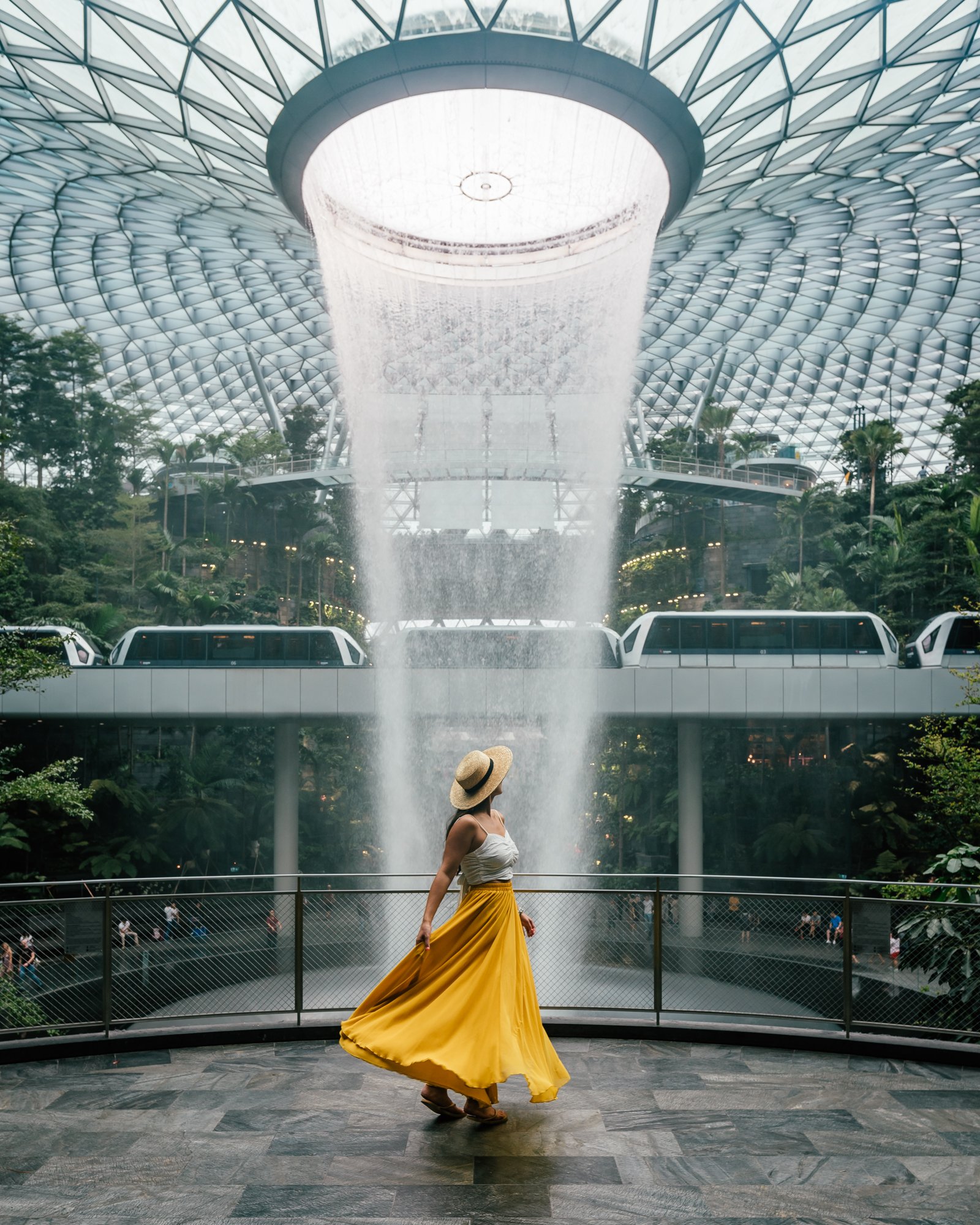
Singapore Changi Airport is hands down one of the most impressive airports in the world. In fact, it has won the award for the best airport in the world for seven consecutive years, and it is not hard to see why.
It has everything you could ever want from an airport… and then some.
You can relax at a spa, swim in the rooftop pool, or explore a butterfly garden. It’s home to the world’s tallest indoor waterfall and a canopy park with slides and nets! And this only scrapes the top of the barrel when it comes to attractions at Changi Airport.
So make sure you add some extra time when you land or before you take off to explore this airport!
13. You need to bring napkins and clean up after yourself at hawker centers.
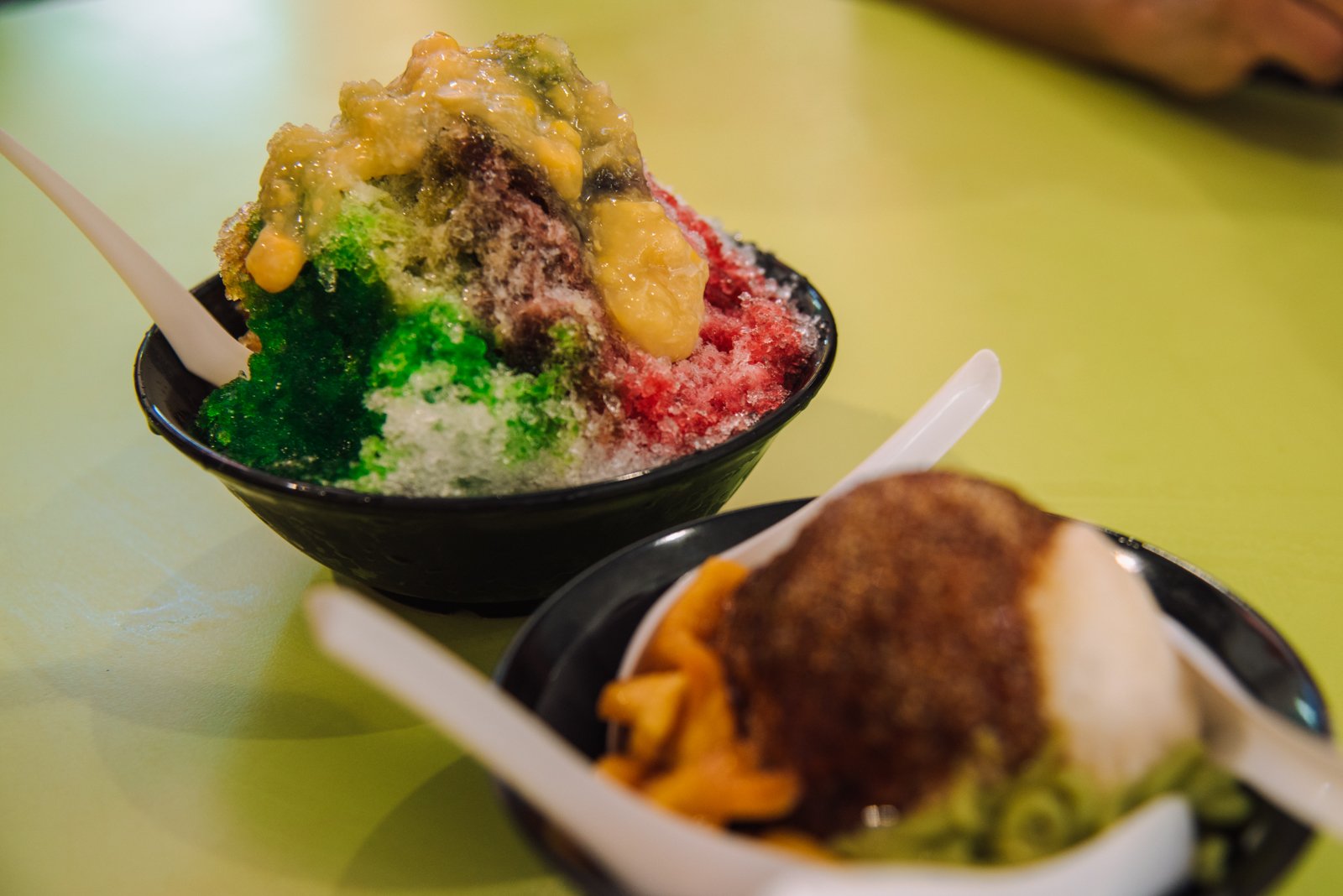
Singapore’s specialty cuisine is found at hawker centers all around the island. And hawker centers are a must-visit for anyone who loves good local food and culture!
These open-air food courts offer a variety of dishes from different cuisines, such as Chinese, Malay, Indian, and Peranakan. Oftentimes, hawker center stalls serve a handful of specialty dishes that they’ve perfected over the years. You can find anything from laksa and satay to char kway teow and ice kachang, all at extremely affordable prices.
But something crucial to know before heading to a hawker center is that you won’t find napkins or water on the tables.
Yup, it’s BYO napkins and water! Locals often bring tissue packets wherever they go so they don’t need to buy napkins while out and about.
And if you see a tissue packet on a table, it’s most likely someone reserving a table! This is called “chope-ing”: locals will reserve seats with things like a tissue packet, an umbrella, water bottle, etc. while they wait in line.
One more comment on hawker center ettiquite: Don’t forget to clean up your trash and return your tray before leaving- or there’s a chance you could get fined!
A note on water: the tap water is safe to drink in Singapore! So instead of buying water bottles, you can simply refill a water bottle wherever you go!
14. There are Michelin-rated hawker stalls!
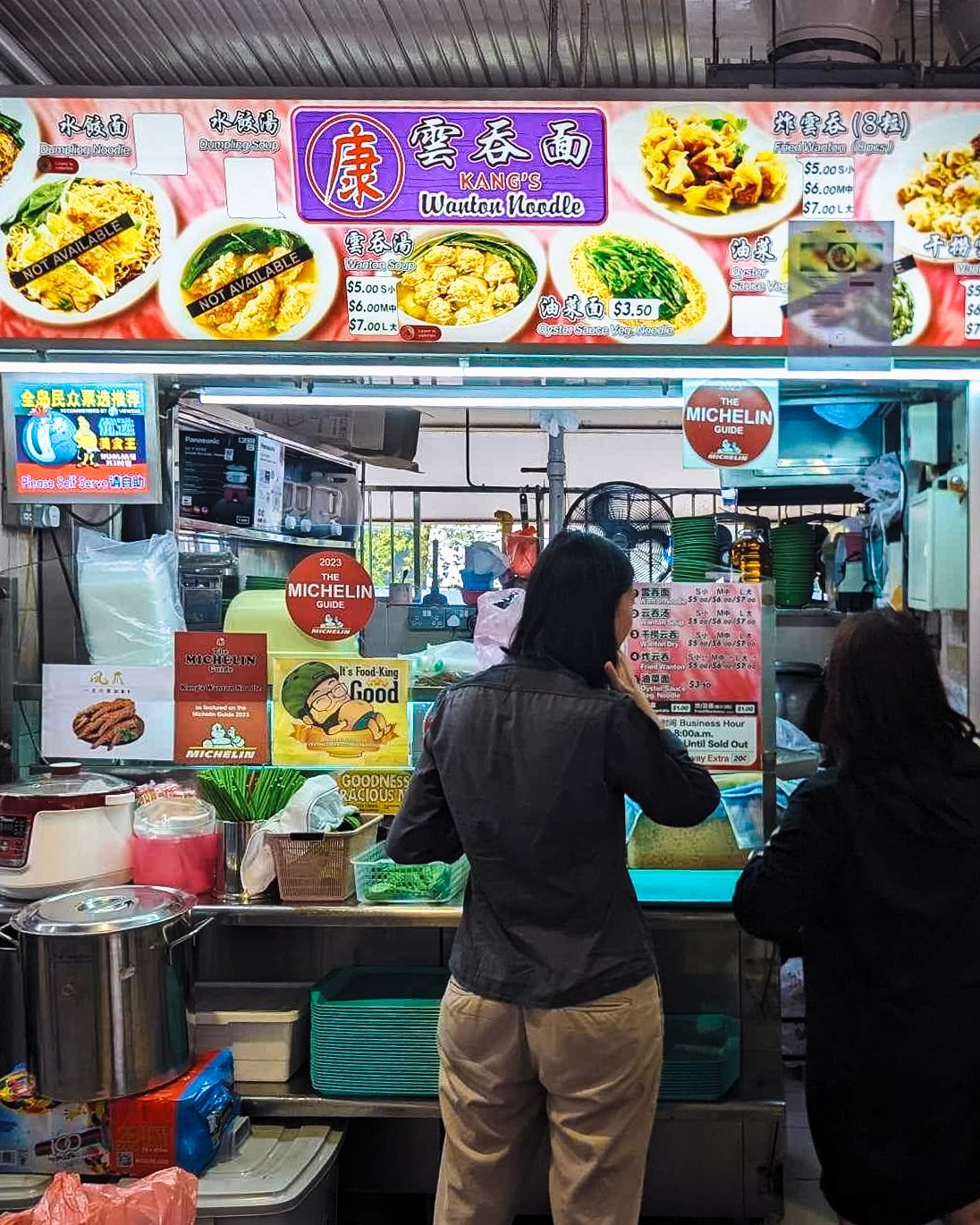
If you’ve never eaten at a Michelin restaurant because you can’t afford it (I feel you!), here’s your chance to eat Michelin for cheap.
There are several hawker stalls that have earned Michelin stars or Bib Gourmands over the years!
Here are a handful of them along with their Michelin specialty:
- Liao Fan Hong Kong Soya Sauce Chicken Rice & Noodle Stall at Chinatown Complex Food Centre is known for its soya sauce chicken rice and noodles.
- Hill Street Tai Hwa Pork Noodle at Crawford Lane is known for its spicy egg noodles with pork, meatballs, and dumplings.
- R&B Express at Newton Food Hawker Centre is known for its crispy, juicy BBQ chicken wings. (But also try their satay and popiah!)
- Koka Wanton Noodles at North Bridge Road Market is known for its wonton mee (I can vouch for the deliciousness of this place!! I still dream about it).
- San Bao Soya Sauce Chicken at Redhill Market is known for its famous soya sauce chicken rice.
- Rolina Singapore Traditional Hainanese Curry Puffs at Tanjong Pagar Plaza Market & Food Centre is known for, you guessed it, their curry puffs!
15. You need to book a hotel room to swim at the top of Marina Bay Sands.
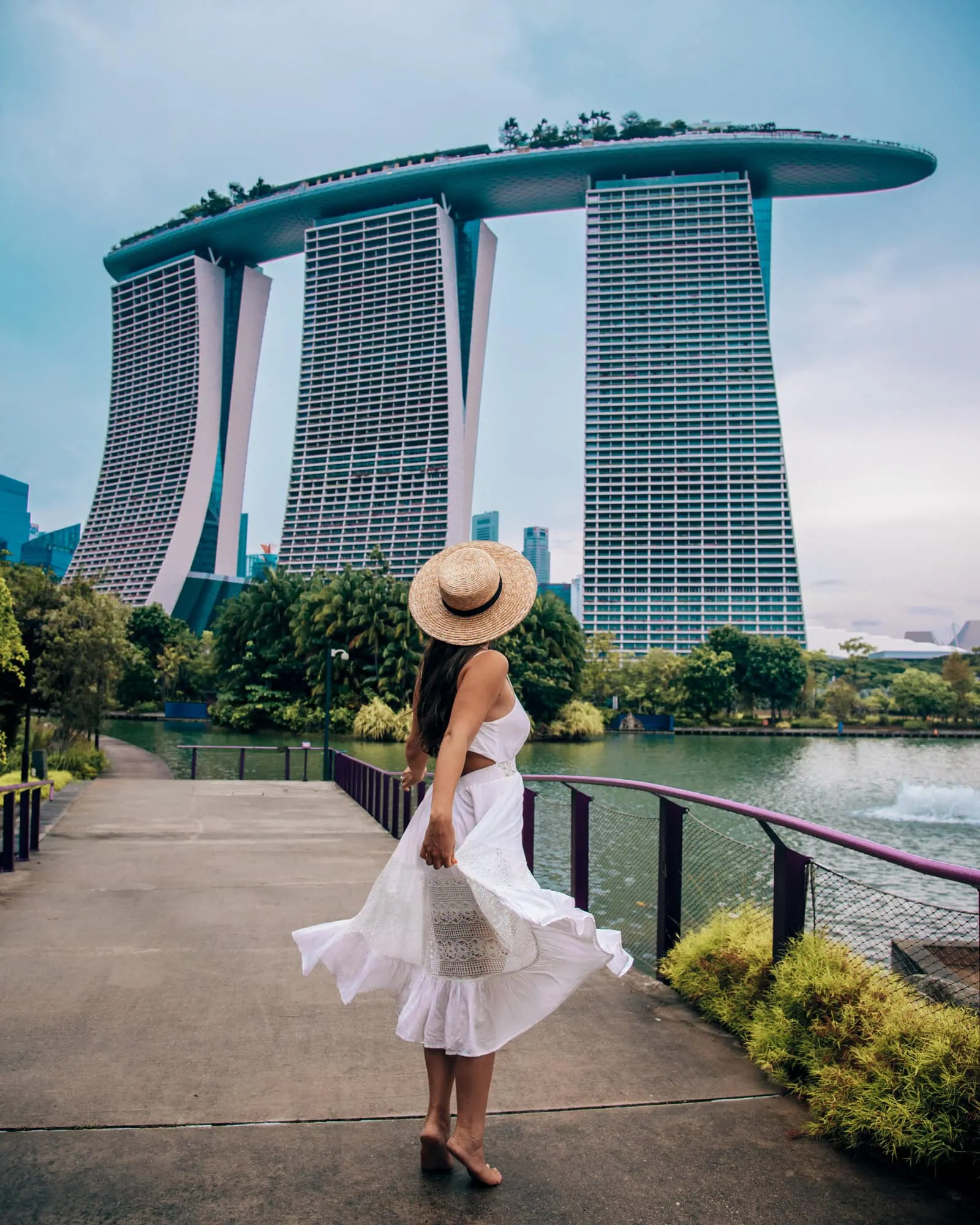
Marina Bay Sands is one of the most famous landmarks in Singapore. And if you’re not familiar with it, the boat-looking structure on the top of the three building towers is home to a jaw-dropping rooftop infinity pool.
You can imagine just how incredible it would be to swim there! I haven’t personally done it, but my parents have and they loved it!
But, alas, you’ve got to shell out a hearty fee to book a room at the hotel if you want to swim at the pool!
Rooms at MBS usually start at $500 (~S$660) a night.
However, if you simply want a great view, you can go to Marina Bay Sand’s SkyPark Observation Deck for considerably less (tickets start around S$28 for adults at non-peak hours).
In conclusion…
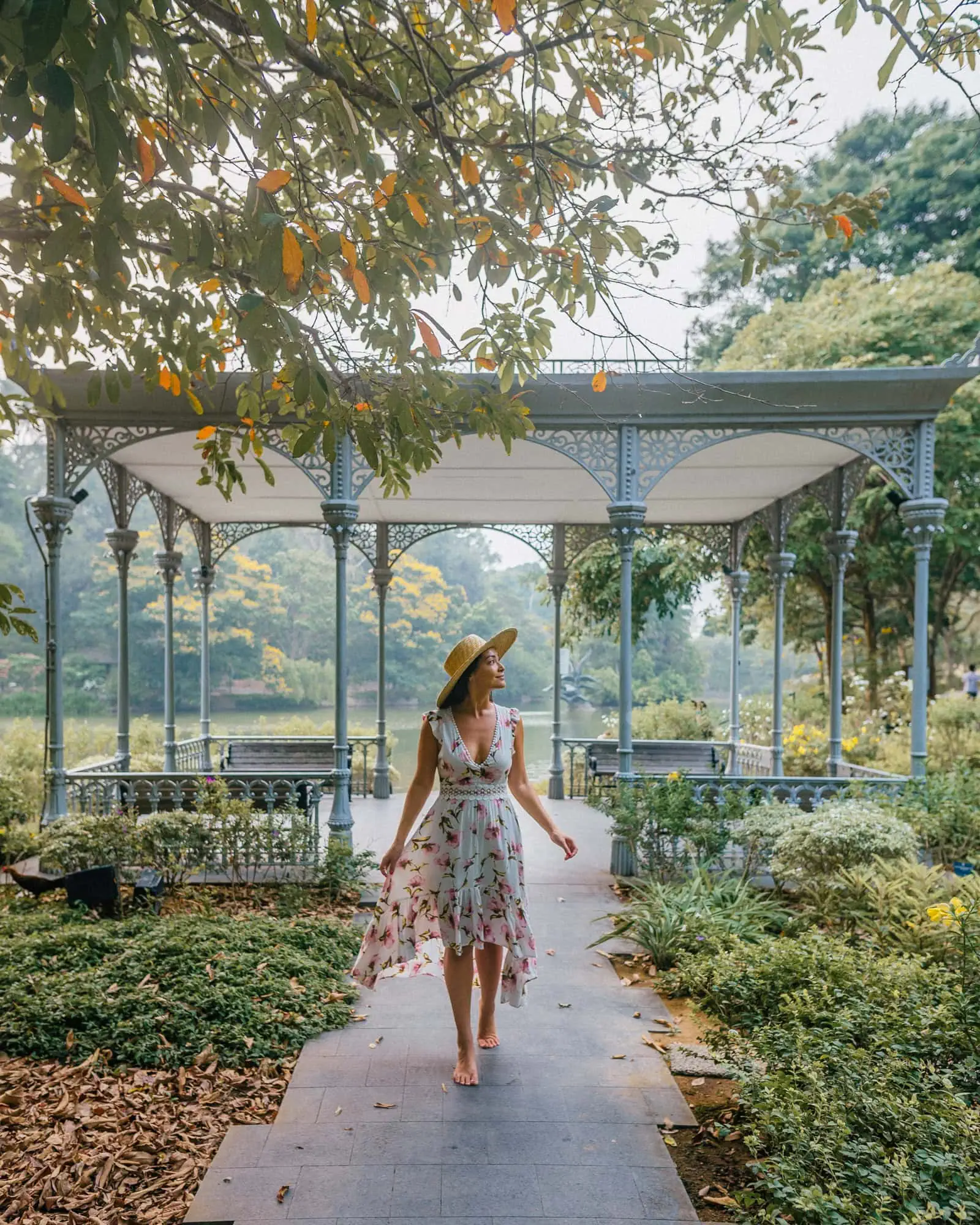
These are all the things I wish I’d known before my first visit to Singapore.
International travel can be tricky at times, but having the right expectations and Singapore travel tips can help make your trip go off without a hitch!
Anyway, I hope this list has prepared you to know what to expect on your first visit to Singapore! And here are a few more articles you might find helpful:
- The Most Instagrammable Places in Singapore
- Top Things Everyone Should Do in Singapore
- How to Get to Pulau Ubin and What to Do On This Hidden Gem in Singapore
- Our Overnight Layover at Changi Airport Experience
Have so much fun in this incredible city/country!
Safe travels,
Jasmine

